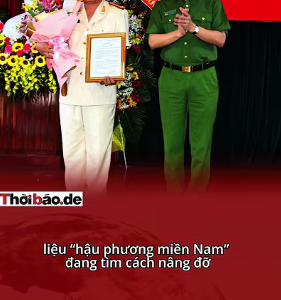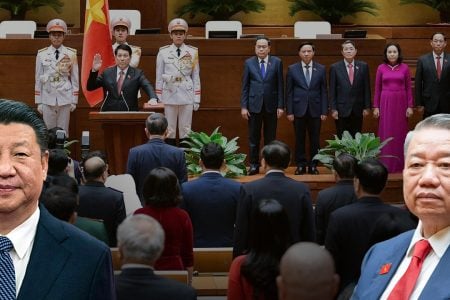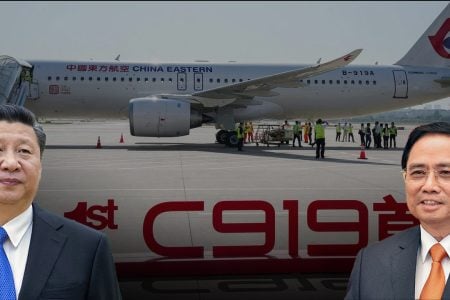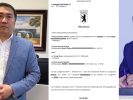
„Talking nice but with actual bed intention“
Recently, in an online forum organized by the Chinese Embassy in the Philippines and a local advocacy group in Manila, the Philippines on January 17, Chinese Foreign Minister Wang Yi said that the country will not use power to „bully“ neighbors, emphasizing that they will resolve disputes in the South China Sea (Vietnam calls it the East Sea) peacefully. He said: „Focusing only on one side’s sovereignty claims and imposing its will on the others is not the way neighbors should treat each other. This goes against the Eastern philosophy of harmony between people“ (?) With the Philippines, he hoped that the two sides could „reasonably solve problems based on goodwill and reality,“ and affirmed that Beijing would „not use its power to oppress smaller countries.” (1)
This statement by the Chinese foreign minister comes just days after the US State Department on January 12 published a report in which with legal arguments refuted China’s illegal claims in the South China Sea and called on the country to stop its coercive and illegal activities in the region. Beijing reacted harshly to this report.
With Mr. Wang Yi’s statement, will China change its mind? Or is this simply a „trick“ move to „reassurance“ countries in the South China Sea?
There have been many recent Chinese actions that have made Mr. Wang Yi’s words unbelievable.
From „nine-dash road“ to „Sansha“
The media recently quoted Malaysian Foreign Minister Saifuddin Abdullah as saying last week, noting that Beijing is now „not talking about the ’nine-dash line‘, but is more focused on justifying what it calls the „Sansha.“ Mr. Saifuddin Abdullah said that ASEAN countries have also recognized this change in Beijing’s argument and this claim is „even more dangerous“ than its old claim (2).
The area that China calls the „Sansha“ is four groups of islands in the South China Sea that Beijing says it has „historic rights“ to this group of islands, including Dongsha (Dongsha Qundao), Paracels, the Macclesfield Shoal area (Zhongsha Qundao) and the Spratlys (Nansha Qundao). As for the claim that Beijing may be trying to obscure – the „nine-dash line“ claim – is a U-shaped line that encloses most of the South China Sea that China has long been using to claim and claim its sovereignty over the disputed waters.
Thus, we can see how „deceitful“ China is on sovereignty issues in the South China Sea.
Threats continue
Mr. Wang Yi said it very well, but it is still not easy to forget when, less than two months ago, China also sent three coast guard ships to spray water cannons, forcing two Philippine civilian supply ships to turn around in the Co May beach in Spratlys.
The Global Times (China) on January 19 reported that forces of the Southern Command of the People’s Liberation Army (PLA) had just conducted a live-fire training exercise in the South China Sea. (3)
Aggressive actions and threats to other small and weak countries in the South China Sea always happen like that, but Mr. Wang Yi talks about morality, can it be heard?
Talking fake about the Vietnamese maritime militia
Also not long ago, China’s People’s Daily on January 7 published an article by Ding Duo, deputy director of the China National Institute of Research on the South China Sea, analyzing the force “ armed fishing boats” of Vietnam with guerrilla tactics against Chinese forces at sea (4).
The author of the article wrote that “Fishers from China, Malaysia, and Indonesia reported that they have been robbed and threatened by foreign fishing boats in the South China Sea in recent years. More than a dozen young crew members on these unusual fishing boats can speak Vietnamese fluently and they are also armed with light weapons such as pistols and submachine guns. According to the descriptions of fishermen from other countries, these armed fishing boats are most likely from Vietnam’s maritime militia.
For more than a decade, Vietnam has used enormous human and material resources to develop its maritime militia. The maritime militia acts as the „eye“ of the Vietnam Navy and Coast Guard, and even participates in confrontations at sea, which not only suppresses but also directly threatens the operations and security of Vietnam. safety of Chinese fishing vessels and law enforcement vessels.”
This kind of „slander„, „blood-soaked“ of China, the people of the world are not strange.
Clause 1, Article 2 of Vietnam’s 2019 Militia and Self-Defense Law clearly stipulates: „Military and self-defense forces are mass armed forces that cannot separate from production and work, organized locally called militia, organized in state agencies, political organizations, socio-political organizations, non-business units, economic organizations (hereinafter collectively referred to as agencies and organizations) is called self-defense.” Clause 5, Article 2 of the Law on Militia and Self-Defense defines: „Military and self-defense forces of the sea are the forces on duty on the islands and waters of Vietnam.“
Thus, we can see that the biggest goal of Vietnam’s maritime militia is an on-site force to actively participate in disaster prevention, mitigation, and recovery activities. In addition, due to the fact that Vietnamese fishermen still have fishing activities in the waters under foreign sovereignty, leading to many international legal consequences, affecting the development of marine economic development of Vietnam. Therefore, the maritime militia and self-defense force also has the task of propagating and disseminating the law on national sovereignty, compliance with national and international laws, and maintaining peace and stability in the sea and islands. In addition, depending on the strategic location and importance of production and exploitation facilities of marine resources, militia and self-defense units are equipped with appropriate weapons and equipment, and are trained in combat skills appropriate techniques to coordinate with the Vietnam People’s Navy to be ready to fight and fight actively to protect the sovereignty of the sea and islands.”
In an answer to the press, Researcher Nguyen The Phuong from Vietnam said: „Vietnam’s maritime militia are mostly indigenous fishermen, still go fishing every day, receive little training and only enjoy allowances most of Vietnam’s fishing boats are just wooden-hulled ships, mainly fishing near the shore, while Chinese maritime militia ships are all steel-hulled ships, equipped with satellite equipment, able to long days away from the shore and have good impact resistance.” (5)
Thus, we have seen a clear difference between the Vietnamese maritime militia and the Chinese maritime militia. China’s maritime militia is a tool of the state, using „gray zone“ tactics to provoke, invade, coerce, and threaten other countries‘ waters. The Vietnamese maritime militia only operates in Vietnamese waters, mainly engaged in fishing activities at sea and supporting fishermen.
Therefore, Spokesperson Le Thi Thu Hang said that the information from China Daily was not true and Vietnam completely denied it: „Vietnam adheres to the policy of national defense, security, peace, and self-defense. Activities of Vietnamese functional forces absolutely comply with Vietnamese law and international law, especially the 1982 United Nations Convention on the Law of the Sea (UNCLOS).
Along with that, Vietnam always makes efforts to contribute to maintaining the East Sea region of peace, stability, security, safety, cooperation, and development, in accordance with international law, including UNCLOS 1982. We call on countries inside and outside the region to make practical and responsible contributions to this goal.” (6)
Thoibao.de (Translated)
- https://www.reuters.com/world/china/china-wont-bully-neighbours-over-s-china-sea-foreign-minister-says-2022-01-17/
- https://www.rfa.org/english/news/china/malaysia-southchinasea-01182022151031.html#.YefJ8yoT_LE.twitter
- https://www.globaltimes.cn/page/202201/1246499.shtml
- https://global.chinadaily.com.cn/a/202201/07/WS61d7a545a310cdd39bc7fb50.html
- https://www.rfa.org/vietnamese/in_depth/vietnam-militia-squadron-cannot-threaten-china-06142021140931.html
- https://baoquocte.vn/viet-nam-phu-nhan-thong-tin-xay-dung-luc-luong-dan-quan-tu-ve-tren-bien-171580.html



























